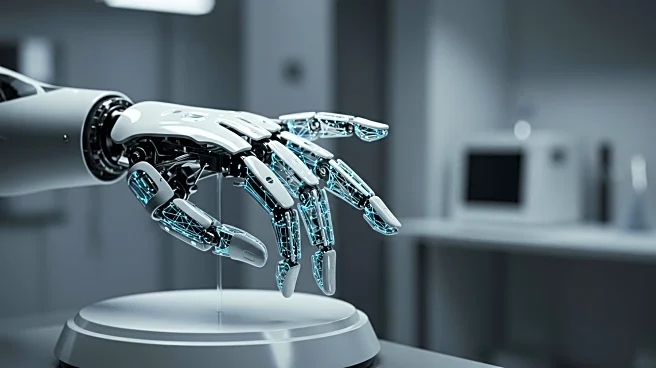What's Happening?
Recent advancements in artificial nerve systems are paving the way for bio-interactive prostheses that can significantly aid individuals with motor recovery after central nervous system injuries. These systems integrate flexible organic sensors and synaptic transistors to form reflex arcs with biological muscles, mimicking natural neural pathways. The development of neuromorphic electronics and artificial synapses is crucial in creating prosthetic devices that can restore sensory feedback and motor control. Studies have demonstrated the potential of these technologies in enabling voluntary gait control and improving walking efficiency in individuals with spinal cord injuries. The integration of neuromorphic multilayered e-dermis in prostheses allows for the perception of touch and pain, enhancing the functionality of artificial limbs.
Why It's Important?
The development of bio-interactive prostheses represents a significant breakthrough in the field of neuroprosthetics, offering hope to individuals with paralysis or limb loss. By restoring natural sensory feedback and motor control, these devices can improve the quality of life for users, enabling them to perform daily activities with greater ease and efficiency. The ability to mimic natural neural firing patterns and provide tactile sensations can reduce phantom limb pain and enhance cognitive integration of prosthetic limbs. This technology not only benefits individuals with disabilities but also has broader implications for the healthcare industry, potentially reducing the economic burden associated with long-term care and rehabilitation.
What's Next?
The next steps in the development of bio-interactive prostheses involve refining the integration of neuromorphic electronics and enhancing the sensory capabilities of artificial limbs. Researchers are focusing on improving the durability and flexibility of these systems to ensure long-term usability and comfort for users. Collaboration between neuroscientists, engineers, and healthcare professionals will be essential in advancing these technologies and bringing them to market. Additionally, regulatory approval and clinical trials will be necessary to ensure the safety and efficacy of these devices before widespread adoption.
Beyond the Headlines
The ethical implications of bio-interactive prostheses are significant, as they raise questions about the integration of artificial systems with human biology. Ensuring equitable access to these advanced technologies is crucial to prevent disparities in healthcare. Furthermore, the long-term impact on societal perceptions of disability and the potential for enhancing human capabilities beyond natural limits are areas that require careful consideration.
















